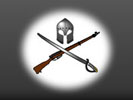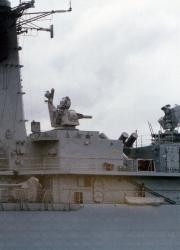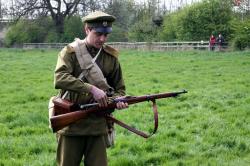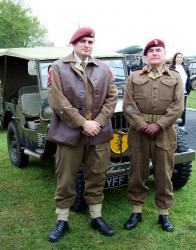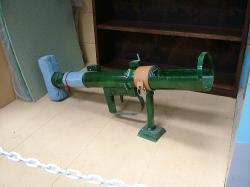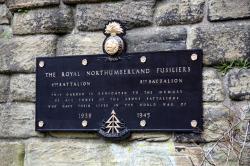Translate this Page
Battle of Jersey
Battle Name : Battle of Jersey
Date(s) : 06 January 1781
Part of : Ongoing Anglo-French aggression of the 18th C ,
Outcome : A victory for British Garrison over French expeditionary force
Type of battle : Land
Summary
Abortive French attempt to conquer Jersey, Channel Islands.
Location
Jersey, Channel Islands - Royal Square (St. Helier) and La Rocque Battery, Grouville. (Channel Islands)
More details
In the early morning of the 6th Jan 1781 a French volunteer force landed at La Rocque Battery on the south east coast under the cover of darkness, unreported thanks to the absence without leave of the militia guard. Unfortunately due to heavy seas many of their troops were unable to come ashore, and they, including the artillery, were forced to turn back.
The remaining French troops were able to make their way into the St. Helier town centre where they established HQ in the States (government) building in the Market Place (now the Royal Square). A party surprised the Lt. Governor, Moses Corbet, and forced him to sign a document ordering the regular garrison and militia to lay down their arms and surrender, under threat of the town being burnt. However, a militia officer, Captain Clement Hemery, was able to alert Major Francis Peirson, who had command in the absence of the garrison's senior officers on Christmas leave. He chose to ignore the order and sent out instructions that other commanders should do the same.
When de Rullecourt summoned the principle fortress, Elizabeth Castle, to surrender, the commander bluffed his way into procuring more time - allowing Peirson to dispatch more troops to increase the number of defenders - then opened fire on the French, driving them back with the Castle's extensive and well sited batteries. Meanwhile at La Rocque Captain Campbell who had command of the 83rd Foot, was persuaded by the rector of St. Martin, the Revd. Francis Le Couteur, to assault the French defenders left at the Battery. After a short cannonade the Grenadier company led the charge and overran the redoubt. They then used the battery to drive off or sink the French vessels, thus trapping de Rullecourt in the Island. Finally Peirson led the 95th, 78th and elements of the Jersey Militia against the main force in the Square. Victory was achieved rapidly, though both Peirson and de Rullecourt were killed.
After such a defeat, the French never attempted to invade again. The battle was a major embarrasment to the French government, for although the invasion had been a private venture it had state approval and funding and further troops had been promised should the initial attack have succeeded. After its failure they denied all connection with the venture. In Britain it was widely celebrated, helping to restore a little of the nation's faith in its armed forces. A cartoon appeared satirising the invaders and entitled 'The Monsieurs Mistaken'. In 1831 William IV granted the entire Channel Islands militia the prefix 'Royal' in honour of the 50th anniversary of the battle. 'Jersey 1781' was granted as a Battle Honour to the 1st, 2nd and 3rd Regiments of the Militia in 1881. Corbet, the Lt. Governor, was tried before a Court Martial in London for neglecting his duty and was dismissed from his post
Battlefield - the Market place and the surrounding buildings have been extensively rebuilt, though the house where Peirson died, then a doctor's residence, still exists and is now the Peirson Pub. Then statue of George II that stood there then is still in place. The Victorians built a large Gothic house on the site of La Rocque Battery though the Round Tower that formed its heart still stands.
Others: Elizabeth Castle is open to the public most of the year, and includes the militia museum and an exhibition on the battle with some memorabilia, including de Rullecourt's sword. Fort Conway (now Fort Henry), the HQ of the 83rd Foot, is visible from the outside, though is not open to the public and has suffered somewhat from a certain degree of remodelling during the German Occupation of WWII and subsequent neglect. A fine painting of the 'Death of Major Peirson' by the American painter John Singleton Copley was unveiled in 1784 and now hangs in the Tate Gallery in London.
Casualty figures
British Garrison
- Number engaged :
- 2,000
- Casualties :
- 96 (4.80%)
French expeditionary force
- Number engaged :
- 760
- Casualties :
- 760 (100.00%)
